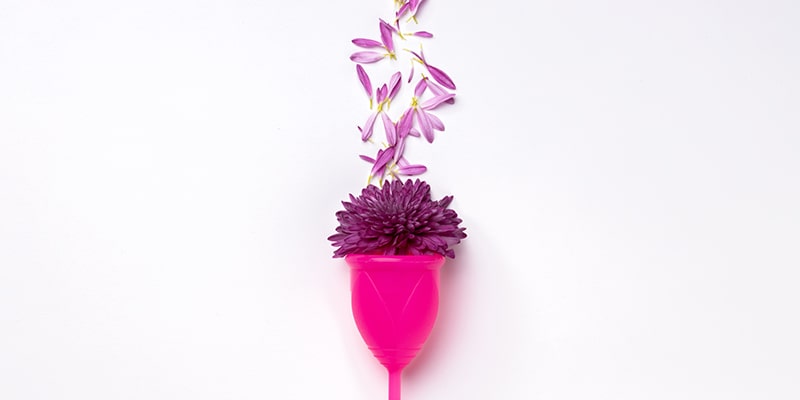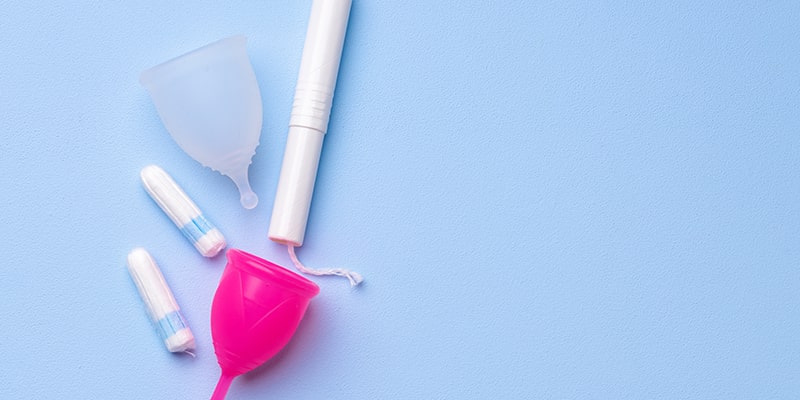04 Jun


0 Comments
8743 Views
What is a Menstrual Cup?
The menstrual cup is a reusable feminine hygiene product. It is a small, flexible funnel-shaped container made of rubber or silicone that you insert into your vagina to catch and collect menstrual fluid.
Menstrual cups can hold more blood than other methods, causing many women to use them as an eco-friendly alternative. And depending on your flow, you can use a menstrual cup for up to 12 hours.
Read on for how to put on and remove the menstrual cup, how to clean it, and more.
How to Use the Menstrual Cup
If you're considering using a menstrual cup, talk to your gynecologist first. While you can buy any of the menstrual cup brands at pharmacies or online, you first need to find the size you need. Most brands that sell menstrual cups sell small and large sizes. To find the right menstrual cup size for you, you and your doctor should consider:
.Your age
.Length of cervix
.If you have a heavy flow
.Hardness and flexibility of menstrual cup
.Capacity of menstrual cup
.The strength of your pelvic floor muscles
.If you had a normal delivery
*Smaller menstrual cups are usually recommended for women younger than 30 who have not given birth normally. Larger sizes are generally recommended for women over the age of 30, who have had a normal delivery or have a heavier menstrual period.

Before inserting the menstrual cup
You may feel discomfort when you use the menstrual cup for the first time. But “lubricating” the menstrual cup can help make the process smooth.
How to put on menstrual cup
If you can wear tampons, you'll find it relatively easy to insert menstrual cups. To use a menstrual cup, simply follow these steps:
.Wash your hands thoroughly.
.Apply oil to the sides of your menstrual cup.
.Tightly fold your menstrual cup in one hand with the edge facing up.
.Insert the container into your vagina as you would a tampon without an applicator. Your cervix should sit a few inches below your mouth.
.Once the cap is placed in your vagina, rotate it. It will spring open to create an airtight seal that stops leaks.
.If you have placed the cup correctly, you should not feel your menstrual cup. You should also be able to move around, jump, sit, stand, and do other daily activities without your bowl falling off.
How often should you remove your menstrual cup?
Depending on whether your menstrual bleeding is heavy or not, you can wear a menstrual cup for 6 to 12 hours. This means you can use a menstrual cup for overnight protection.
You should remove your menstrual cup every 12 hours. If it fills before that time, you must empty it first to avoid leaks.
How to remove menstrual cup
To remove the menstrual cup, simply follow these steps:
.Wash your hands thoroughly.
.Insert your index finger and thumb into your vagina. Gently pull the stem of the glass until you reach the bottom.
.Squeeze the base to release the cup and pull down to remove the cup.
.When your menstrual cup comes out, empty the cup into the toilet.
Menstrual cup care
Reusable menstrual cups should be washed and wiped before they are reinserted into your vagina.
Reusable menstrual cups are durable and can be used from 6 months to 10 years with proper care. Dispose of disposable containers after removing them.
Many women choose to use Menstrual cups because:
They are budget friendly. You pay a one-time price for a reusable menstrual cup, unlike tampons or pads that have to be purchased over and over and can cost $150 a year.
Menstrual cups are safer. Because menstrual cups collect blood instead of absorbing it, you are not at risk of contracting toxic shock syndrome (TSS), a rare bacterial infection associated with tampon use.
Menstrual cups hold more blood. One menstrual cup can hold about one to two liters of menstrual flow. Tampons, on the other hand, can only hold a third of a liter.
They are environmentally friendly. Reusable menstrual cups can last a long time, which means you're not releasing any more waste into the environment.
What are the disadvantages of using a menstrual cup?
Can be difficult to put on or take off
Finding the right fit can be difficult
may cause an allergic reaction (not very common)
may cause vaginal irritation (not very common)

Menstrual cups can be an economical and environmentally friendly option, but you still need to keep a few things in mind:
Wash the menstrual cup very well (you can boil it after washing)
Rinse and let dry
Do not reuse a disposable menstrual cup
What is the price?
Menstrual cups are more cost effective than tampons and pads. You can pay an average of $100 to $150 for a menstrual cup and not have to buy another for at least twelve months.
Will the menstrual cup cost you less?
Is it easier to use?
Don't you want to use it for the environment?
If you answered yes to these questions
trail, then the menstrual cup is for you. But if you're still unsure, talk to your gynecologist about your options and which cup might be best for you.
Have You Heard of Menstrual Cups?
Menstrual cups are bell-shaped cups made of silicone or rubber. When you fold it and insert it into your vagina, it opens up and creates a seal against the vaginal walls. The menstrual fluid is then trapped in the glass until you remove it to empty it.
Menstrual cups have been around since the 1860s. They weren't marketed until the American actress and singer Leona Chalmers began promoting her patented menstrual receptor, now known as a menstrual cup, in the 1930s. Due to concerns about placing them and the discomfort of older rubber models, these containers were not widely used. Menstrual cups have become mainstream lately, in part due to the improved design and soft silicone construction.
Some women report that learning how to insert a menstrual cup often takes some practice.



Leave a Comment